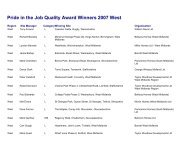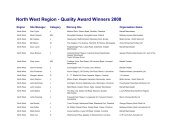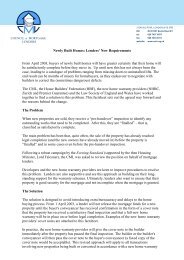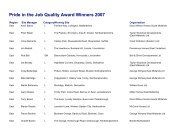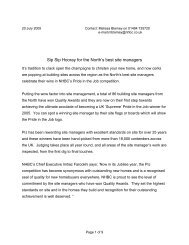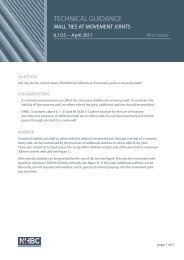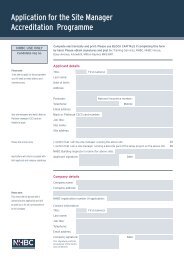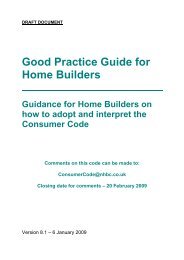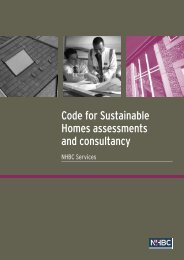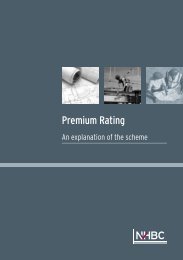Download Technical Extra 09 pdf - NHBC Home
Download Technical Extra 09 pdf - NHBC Home
Download Technical Extra 09 pdf - NHBC Home
Create successful ePaper yourself
Turn your PDF publications into a flip-book with our unique Google optimized e-Paper software.
GUIDANCE AND GOOD PRACTICE<br />
Mechanical ventilation with heat recovery (MVHR)<br />
Who should read this: <strong>Technical</strong> and construction directors and<br />
managers, architects, designers and site managers.<br />
INTRODUCTION<br />
Mechanical ventilation with heat recovery (MVHR) has become a popular choice of technology for building designers<br />
selecting systems that can meet the performance standards set out in Approved Documents L and F. These systems<br />
provide ventilation whilst, at the same time, recovering heat from the exhaust air that would have otherwise<br />
been lost. In recognition of this wider use and a genuine need to ensure satisfactory in-service performance<br />
<strong>NHBC</strong> are developing standards for the design, materials and installation associated with MVHR systems.<br />
GUIDANCE<br />
Installed correctly, MVHR systems have the potential<br />
to provide an efficient method of ventilation and save<br />
energy. But, as with other parts of the building,<br />
optimum performance will only be achieved when the<br />
system is well designed, the components are correctly<br />
specified and the installation is undertaken in a<br />
workmanlike manner. <strong>NHBC</strong> has assembled a Task<br />
Group of industry experts to develop benchmark<br />
standards for MVHR systems. Although still very<br />
much ‘work in progress,’ discussions within the Group<br />
have identified several key performance issues which<br />
need to be addressed.<br />
The Task Group discussions to date have identified<br />
the need for a co-ordinated design process to reduce<br />
the scope for potential conflict when installing<br />
systems. A line representing ductwork may look fine<br />
on a drawing but may not take full account of<br />
potential obstructions, such as floor joists, steel<br />
beams and other services. If there is a conflict on site,<br />
it may be possible for the installer to overcome minor<br />
problems by re-routing ductwork, but any increase in<br />
the number of bends or the length, size or type of<br />
ductwork, has potential to reduce the airflow and may<br />
seriously reduce the performance of the system. In<br />
certain circumstances, this may even mean that the<br />
system cannot be commissioned correctly at<br />
completion, which could require the removal of ceiling<br />
and wall finishes to expose the offending ductwork.<br />
Full consideration must be given to the location of all<br />
elements of the system and the precise routing of<br />
ductwork during the design stage. There are<br />
numerous considerations to be taken into account in<br />
relation to noise, positioning of air valves and<br />
terminals, building integration and the location of<br />
controls, to name but a few. And good practice<br />
dictates that, if changes are required on site,<br />
reference is made back to the designer.<br />
Another significant issue that needs careful design<br />
consideration is the location of the MVHR fan unit,<br />
and the necessity to provide reasonable access for<br />
routine maintenance and filter cleaning/replacement,<br />
which are critical for satisfactory performance. The<br />
expectation is that such maintenance will be<br />
undertaken by the occupier, and therefore, locating<br />
the MVHR fan unit where it can be safely accessed is<br />
essential. It is also worth noting that, in general, the<br />
efficiency of systems is significantly diminished if the<br />
MVHR fan unit is located within an unheated part of<br />
the home. It is likely that the recommendation of the<br />
working group will be for the fan units to be located<br />
within the warm envelope of new homes.<br />
YOU NEED TO…<br />
The new Standards will be distributed towards the end of the year, to become effective on the 1 January 2014.<br />
It is, however, recommended that builders adopt the good practice referred to above at the earliest opportunity.<br />
For technical advice and support, call 01908 747384 or visit www.nhbc.co.uk<br />
Page 16 | March 2013 | Issue <strong>09</strong> | <strong>Technical</strong> <strong>Extra</strong>



